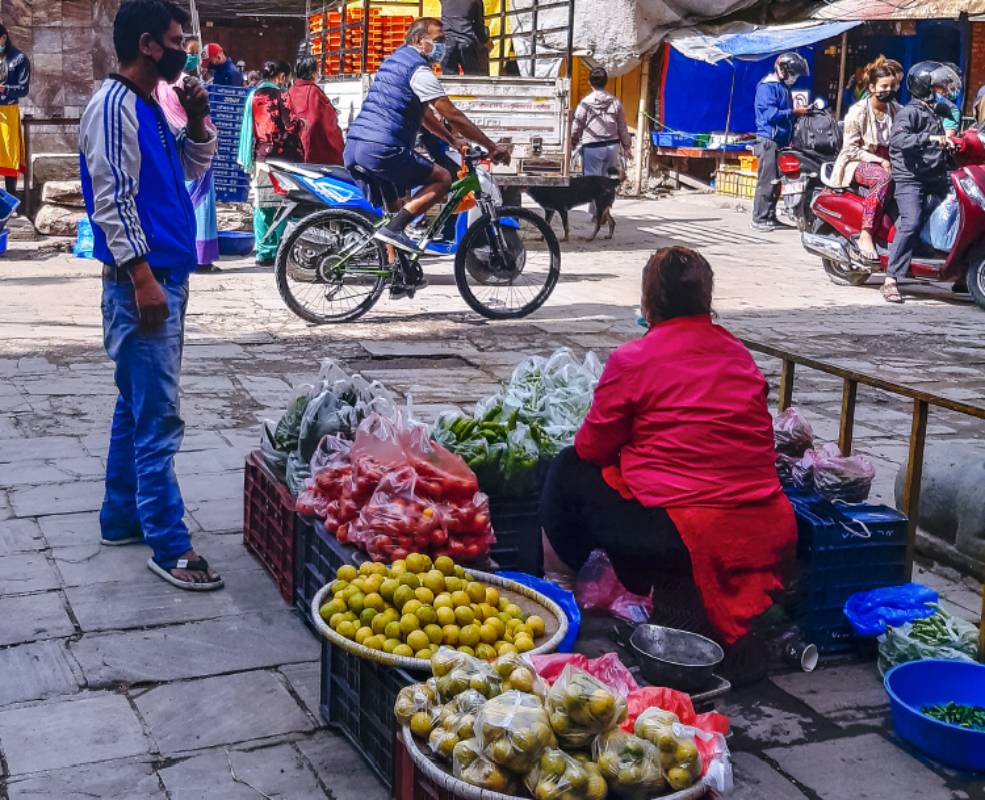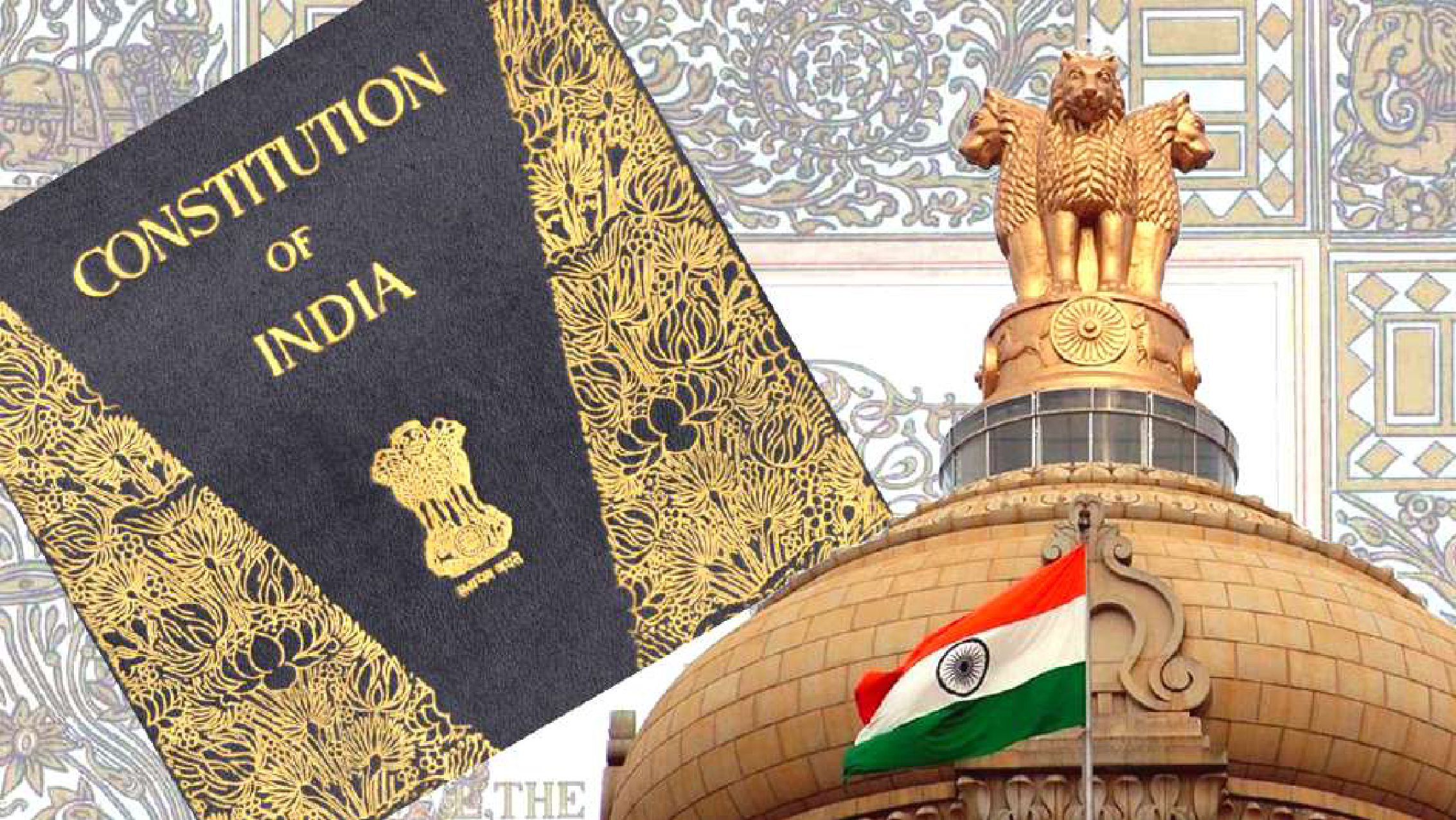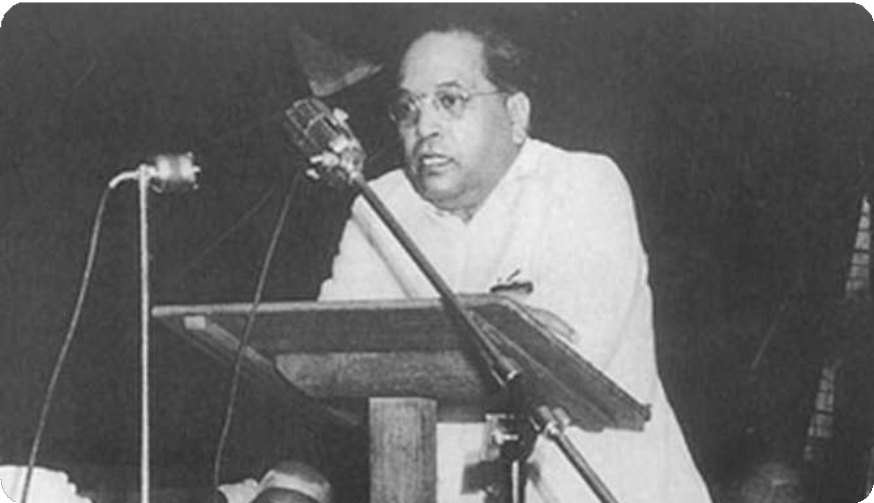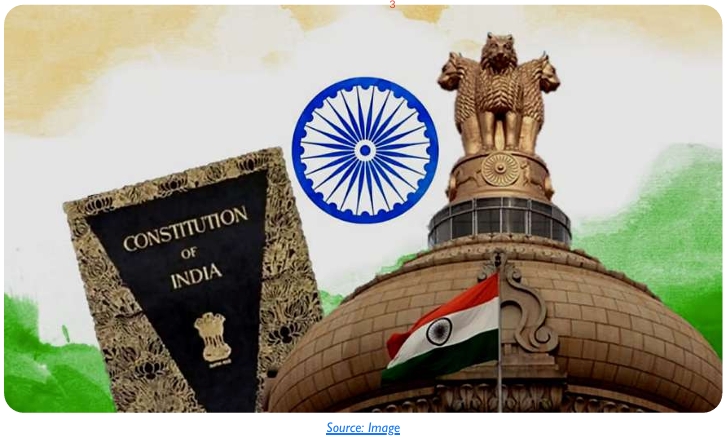Introduction
Street vending as a profession has been in existence in India since time immemorial. A street vendor is broadly defined as a person who offers goods or services for sale to the public without having a permanent built up structure. Street vendors may be stationary by occupying space on the pavements or other public/private areas, or may be mobile in the sense that they move from place to place carrying their wares on push carts or in cycles or baskets on their heads, or may sell their wares in moving buses or trains. According to official estimates currently there are around 18 lakh street vendors in the country, with 14 lakh being registered1. However, there are huge discrepancies in the actual numbers, with the National Hawker Federation putting the figure at more than 4 crore2. Urban vending is not only a source of employment but provides affordable services to the majority of urban population. However, in spite of the important role played by the vendors in the economy, historically they have been considered as unlawful entities and have been subjected to continuous harassment by Police and civic authorities.
This conflict between civic authorities and street vendors has its roots in 19th century colonial India. In the second half of the 19th century the colonial regime started seeing hawking as an obstruction and a threat to public order3. At the time many Municipal regulations were introduced to deal with the perceived breakdown of urban order associated with industrialisation, migration and social and communal riots4. The introduction of these regulations represented a redefinition of the legal status of public space and the outside became a public space under the jurisdiction of the colonial state. This new demarcation between public and private had the effect of depriving the working classes and removing their access from the collective use of public spaces5. This notion continued post-independence and vendors were continued to be seen as encroachers by the state.
The rising contestation over public space in post independent India ultimately led to a number of litigations and street vending emerged as a major policy issue in the 1980s. In a 1985 ruling by the Bombay High Court, in the case of Bombay Hawkers Union v Bombay Municipal Corporation6, for the first time the courts upheld the right of livelihood street vendors, and sought to legitimise vendors through licensing, and creating hawking and non-hawking zones. The ruling determined that the municipal corporation should find space for street vendors to trade. Subsequently, in 1985 the Supreme Court also held the right to livelihood to be an integral part of the right to life in Olga Tellis v. Bombay Municipal Corp7. As per the judgement:
Eviction of the petitioners from their dwellings would result in deprivation of their livelihoods. The right under article 21 is the right to livelihood, because no person can live without the means of living i.e. the means of livelihood…there is a close nexus between life and means of livelihood and as such that which alone makes it possible to live, leave aside what makes life liveable, must be deemed an integral component of life.
Thereafter, in 1989, in the case of Sodan Singh vs. NDMC8, the Supreme Court again held that street vendors had a right to carry on their business and the same can’t be sacrificed for the peoples’ superficial right to use streets. The court ordered that the vendors be given the right to trade with reasonable restrictions, and observed that inaction on the part of the government with regard to street vendors would amount to negating the fundamental rights of citizens. The following is an extract from the judgement:
Street Trading being a fundamental right has to be made available to the citizens subject to Article 19(6) of the Constitution. It is within the domain of the State to make any law imposing reasonable restrictions in the interest of general public. This can be done by an enactment on the same lines as in England or by any other law permissible under Article 19(6) of the Constitution. In spite of repeated suggestions by this Court nothing has been done in this respect. Since a citizen has no right to choose a particular place in any street for trading, it is for the State to designate the streets and earmark the places from where street trading can be done. In action on the part of the State would result in negating the fundamental right of the citizens. It is expected that the State will do the needful in this respect within a reasonable time failing which it would be left to the courts to protect the rights of the citizens.
These landmark cases, along with a number of others, laid the ground for the rights of street vendors, and the courts continued to give guidelines to be followed by civic authorities till proper legislation could be brought into force.
In the 1990s India entered the liberalization era and there was exponential growth in urbanization and related issues. India’s big cities started confronting problems similar to many cities worldwide such as congestion, lack of formal job opportunities and growing informal economies. As in other countries, the drive to achieve world class cities led to large-scale evictions of street vendors and many small organizations of street vendors emerged in protest of these evictions9. At the time, globalization and urbanization had exacerbated city-level conflicts between vendors and local authorities across the world and street vendors began to organize internationally10. In November 1995, representatives of street vendors from 11 cities across the world held the inaugural meeting of the International Alliance of Street Vendors in Bellagio, Italy11. The Bellagio International Declaration of Street Vendors, signed by representatives at that meeting, envisaged the formulation of a National Policy for hawkers and vendors to improve their standard of living by giving them a legal status through licensing, promotion of self-regulation, access to legal system and credit facilities etc12. Following the Bellagio Conference, in September 1998, the National Association of Street Vendors of India (NASVI) was formed to bring the struggles of street vendors to the national stage13. Over the years NASVI along with NGOs such as SEWA, National Hawkers Federation, Nidan, Manushi etc. have played a critical role in creating an enabling environment for the promotion of street vendors’ rights in India.
Post the Bellagio declaration, although India was a signatory, it was only in 2001 with considerable pressure from civil society groups such as NASVI and Sewa that the Government took the initiative of forming a Task Force to look into the issues and come up with a suitable policy14. This effort culminated in a National Policy that was introduced in 2004. The policy largely conformed to the Bellagio Declaration and also the various Supreme Court orders in this regard15. However the main weakness of the 2004 policy statement was that it was only a guideline, and there was no mechanism to ensure implementation by the state and municipal governments16. As a result the implementation was patchy. In the same year the National Commission for Enterprises in the Unorganized Sector (NCEUS) was set up by the government to assess the problems faced by small enterprises. The NCEUS consulted with NASVI and other NGOs working with street vendors who expressed concern over the lack of implementation. Following from these consultations the NCEUS published a report in 2006 giving specific recommendations for policy implementation17. Based on the 2006 report the 2004 guidelines were later updated in 2009 to include modifications to improve implementation18. After the revised 2009 guidelines were published, the cause of street vendors was taken up by the National Advisory Committee.
The NAC consultations were followed by a 2010 Supreme Court ruling which called on the government to enact a law on street vending and reinforced the need for state and local governments to implement binding laws based on the National Policy19. This judgement culminated in the drafting of the Street Vendors’ bill in 2012, which involved extensive dialogue between NASVI and the Ministry of Housing and Urban Poverty Alleviation. However, at one point in 2013 the drafting process stalled due to a petition in the Supreme Court for the “protection of public spaces” in the 2013 case of Maharashtra Ekta Hawkers Union & Anr. v. Municipal Corporation, Greater Mumbai &Ors20. But the SC once again came in support of the street vendors gave detailed guidelines for the implementation of the 2009 policy. Thereafter, the Bill was passed in both houses by February 2014 and became the Street Vendors (Protection of Livelihood and Regulation of Street Vending) Act, 2014. This Act was drafted with the legislative intent of protecting the livelihood rights of street vendors under Article 19 of the Constitution, as well as regulating street vending.
The Street Vendors Act acknowledges the integral role played by street vendors in the urban ecosystem. Further, the act mandates local bodies under the state governments to carry out surveys and identify street vendors, set up participatory town vending committees comprising all stakeholders (street vendor associations, resident welfare associations, municipal officials), and create dedicated vending zones to accommodate the street vendors21. The Act now governs over all matters in regards to the rights and duties of the street vendors in India. It also provides for confiscation of goods that are being sold by street vendors to be cataloged properly22. The 2014 Act was widely seen as a major success for NASVI, which after nearly ten years of lobbying was actively involved in drafting the legislation. The Act also represents a significant innovation in mechanisms to regulate the informal sector.
Status of Implementation
The Street Vendors (Protection of Livelihood and Regulation of Street Vending), 2014 is unanimously considered a progressive social policy aimed at protecting the livelihoods of street vendors. The Act has mandated state governments to prepare the rules for its implementation. In addition to the rules, the state governments are also required to frame a scheme for street vendors after due consultations with the local authority and the Town Vending Committee (TVC)23. The Scheme consists of 28 items broadly related to the following activities: survey of street vendors, providing certificate of vending, forming relocation or eviction rules, functioning of TVC, principles for restriction-free, restricted or no-vending zones, time-sharing, holding capacity of each zone, and relocation24. However, many studies and reports have pointed out that there is an uneven implementation of the Act cross the country, with some states having constituted TVCs without conducting surveys and registration of vendors, some states which are attempting to draft Rules and Schemes without consulting vendors and organisations working with street vendors and thus subverting the very spirit of the Act, and in some cities where evictions of street vendors are taking place on a daily basis in contravention of the Act and the Supreme Courts orders.
The 2019 report by the Centre for Civil Society had identified 11 steps that were required to be undertaken by states to implement the Act25. Further, it had pointed that no state has implemented all of them yet, and Tamil Nadu, Mizoram, Chandigarh and Rajasthan had progressed the most. The main highlights of the study:
- Only 26 states had notified the rules whereas, four states namely, Arunachal Pradesh, Karnataka, Telangana and Nagaland had not notified the rules
- Section 38 of the Act requires state governments to frame and notify a scheme within 6 months from May 2014. However, till January 2019 only 19 states had notified the scheme, whereas 11 states including Arunachal Pradesh, Gujarat, Haryana, Karnataka, Kerala, Madhya Pradesh, Manipur, Nagaland, Puducherry, Sikkim and West Bengal were yet to notify the scheme.
- Only Four states including Assam, Madhya Pradesh, Uttarakhand and Punjab, had formed the Grievance Redressal Committees as mandated by section 20.
- Only 14 states namely Andhra Pradesh, Bihar, Chandigarh, Goa, Gujarat, Haryana, Kerala, Meghalaya, Mizoram, Puducherry, Punjab, Rajasthan, Telangana and Tripura had formed TVCs in all their towns. Further, only 33% of the 7,263 towns had formed the Town Vending Committees as required by section 22(1). And only 58% of TVCs had the requisite vendor representation of 40%
- 98% of TVCs formed had completed vendor enumeration as required by section 3. Further, the following eight states, Arunachal Pradesh, Gujarat, Haryana, Karnataka, Kerala, Madhya Pradesh, Manipur, and Puducherry had enumerated vendors without a scheme.
- 50% of TVCs had issued identity cards to the identified vendors. Five states, namely Arunachal Pradesh, Gujarat, Kerala, Manipur and Puducherry had distributed identity cards without a scheme.
- Section 21 mandates the local authority to frame a street vending plan based on recommendations from the TVC. The vending zones are to be earmarked based on these plans. However, only 20% of the TVCs had published vending plans. The following 5 states: Madhya Pradesh, Maharashtra, Meghalaya, Nagaland and Punjab have demarcated vending zones without a vending plan.
- Only 31% of the TVCs formed had published a street vendor charter as required by section 26. These belong to the following seven states namely Bihar, Madhya Pradesh, Maharashtra, Odisha, Puducherry, Rajasthan and Tamil Nadu.
Progress in Eight States
1. Maharashtra
The Government of Maharashtra notified the Rules in August 2016. Section 22 of these rules vests powers in the Municipal Commissioners and the State Government to overrule TVC proposals26. By allowing the Municipal Corporation and the State Government to veto TVC decisions, participatory governance has been diluted. Further, the Rules miss out providing clarity on issues such as defining grounds for the removal of the TVC members, which are similar to the removal of a redressal committee member27. The state has also not formulated a statutory scheme as per the Street Vendors Act, 2014. Even though the State Government formulated a scheme in 2017, the Court refused to regard it as a legitimate scheme28. Six years have passed since enactment of the central law and planning for a second survey has also not been completed. Though a survey was done in Mumbai, it did not comply with the 2014 Act29.
2. Uttar Pradesh
The Uttar Pradesh Rules were notified on 10 May 2017. However, the Rules lack provisions on important TVC functions, details about proceedings of TVC meetings, qualifications of non-official members, and removal of TVC members30. The process of election of street vendors to the TVC is also not clearly laid out. In addition under the rules some arbitrary powers have been given to officials31. As per the latest report32, TVCs have been created in Banaras, Meerut, Ghaziabad, Moradabad, Kanpur, Firozabad, Aligarh, and Bareilly. The Meerut Municipal Corporation and the Moradabad Municipal Corporation have completed their surveys. A total of 18,500 vendors were identified in Meerut, and 8,500 were identified in Moradabad. Moradabad has also started its work on creating vending and no vending zones. In Noida, the vending zone has been formed in the sector 18 market.
3. Delhi
In Delhi, the initial Rules were notified on 7 January 2016 and the Scheme was notified on 7 January 2016, but at the time Delhi high court put stay on the Scheme33. Thereafter, the amended rules and schemes were notified again in January 2018. As per the amendments instead of the earlier proposed 71 TVCs the government had decided to form around 25 TVCs. By September 2018 the government had formed 27 TVCs, but a large number of them did not have the requisite number of street vendors as members as mandated in the Act34.
Finally, by September 2019 the government set up 28 TVCs each having 30 members, including 12 from among street vendors and the rest from civic agencies, traffic police and market and residents welfare association35. Currently, the Delhi Rules are quite comprehensive; however, there are certain areas where they lack clarity such as the lack of well-defined parameters in case of removal of TVC members, the provision for non harassment of vendors and the duties of the local authority36.
4. Bihar
In Bihar state rules have been notified, but a major contention with the Rules is regarding the mode of selection of street vendors in the TVC, which is through selection and not election37. Further, the TVC meets once every three months, with quorum one-third of TVC strength, which goes against the rational norm of two-third. In the state NASVI had been given the responsibility of implementing the Act in 42 Urban Local Bodies (ULBs)38. As per NASVI, TVCs have been formed in all of these 42 ULBs. Further, a biometric survey has been completed in all 42 ULBs and 55,635 vendors have been identified.
Additionally, 306 vending zones have been identified, 943 street vendors from different ULBs have been given training under the NULM component, and 40122 Vendors are being linked with social security schemes such as PMJJBY, APY, PMJDY, PMJSBY pension schemes, and Housing for all. NASVI has also helped 14,103 street vendors in opening of bank accounts, loan linkages (SEP), Mudra loan, etc.
5. Karnataka
In Karnataka, Rules were drafted in May 2016, and only a draft scheme was formed39. TVCs have been formed only in Mysore and Mangalore40. The Karnataka High Court in June 2019 pulled up the state government, questioning why it had not implemented the Act in the last five years41. In October 2019, the state government submitted to the Karnataka High Court that the TVCs would be formed across the state within four months42.
6. Rajasthan
In Rajasthan both rules and schemes have been formed. The rules were notified in February 201643. While the rules are quite comprehensive there are a few gaps that need to be addressed such as the minimum age of vending, lack of provision for empanelling an expert, manner of documenting minutes and resources required by the TVC44. Further, TVCs have been formed in Jaipur, Jodhpur, Kota, Jaisalmer, Barmer and Bikaner45. Survey has been completed in 3 cities i.e. Jodhpur, Mt Abu and Kota, and vending zones have been identified in Jodhpur.
7. Andhra Pradesh
The Andhra Pradesh Rules were notified on 31 March 201746. Currently, there is one major contention in the rules with respect to the purpose of ‘protection’ of street vendors. Section 3(5) of the rules, which is also present in section 28 of the main Act, states ‘If any street vendor, who indulges in vending activities without a certificate of vending … he shall be liable to a penalty for each such offence which shall extend up to rupees two thousand only’. The problem with such provisions is that it may lead to exploitation of vendors, especially since the process of issuing certificates is slow47. In Andhra TVCs have been constituted in all the towns48. Further, surveys have been completed in 15 Districts namely, Vishakhapatnam, GVMC, Krishna, Vijayawada, Anathapur, West Godavari, East Godavari, Vijaynagaram, Kadapa, Kurnool, Guntur, Nellur, Prakasham, Srikakulamb and Chittoor, where 61,092 street vendors have been identified and 30,478 vendors have received ID cards49. Vizag has also prepared the vending plans and created the vending and non-vending zones. The vending plan created in Vizag is a fully digitalized plan, the first of its kind in India50.
8. Tamil Nadu
The Tamil Nadu Rules and schemes were notified on 2 November 201551. However, the Rules lack certain provisions such as the removal of TVC members, crucial TVC functions such as social security schemes, awareness regarding legal rights, quorum for TVC meetings, and manner for filling vacancies52. The TVCs were constituted in 10 cities but the meetings were not regular. As of 2018, Greater Chennai Corporation had conducted a biometric survey of 27,195 vendors in Chennai, and 20,783 had collected ID cards. Further, 14 out of 15 vending zones had been created53.
Major Bottlenecks
Discrepancy in the Number of Vendors
There is conflicting data on the number of street vendors in Indian cities54. As per the recent figures quoted by Mr. Hardeep Singh Puri, MoS, MoHUA, the current figure is at 1.8 million with 1.3 million having valid identity cards55. As per the NSSO data the urban population with vending as their occupation has grown from 1.03 million in 1983 to 1.61 million in 2011-12.
Some other studies have estimated that street vendors constitute approximately 2% of the population of a metropolis56. The Street Vendors (Protection of Livelihood and Regulation of Street Vending) Act, 2014 puts forth a figure of a maximum of 2.5 percent of a city’s population as street vendors. According to the 2011 census the urban population at the time was around 377 million which would make the number of vendors at a little more than 9 million. Considering the growth rate the current figure would be around 10 million vendors57. However, according to the Shaktiman Ghosh, the head of the National Hawker Federation, the figure is around 4 crore58. These figures suggest a huge variation. Having reliable data is necessary for issuing id cards as well as for land use planning to decide on the vending zones etc. As per the provisions of the Act, the TVC is responsible for enumerating the vendors through surveys. The delay in formation of TVCs, and when formed in conducting surveys, has become a major roadblock. Since effectiveness of implementation of the Act begins with having correct estimates this is a cause for major concern.
Problems in Formation of Town Vending Committees
The Act requires formation of TVCs through elections and only street vendors with valid ids can vote in these elections. However, the problem is that these ids have to be issued by the TVC through periodic surveys of vendors in the first place. This creates an inherent problem in the formation of TVCs. To overcome this some states have created provisional Town Vending Committees with nomination or elections based on outdated official lists59. However, it is not clear how states will transition from provisional to final. The initial TVCs that have been formed also have an under representation of vendors. The law mandates 40 percent representation of street vendors in the TVCs. A 2019 CCS study60 has shown that in 756 TVCs in fourteen states, which account for 30 percent of all TVCs, there is no vendor representation.
Continued Eviction
Despite the Act street vendors continue to be seen as encroachers on public land and continue to be evicted across the country61. In 2019 there were a number of eviction drives in Delhi in places such as Karol Bagh, Connaught Place etc. Around 58,000 vendors were evicted in Mumbai between August and October 2017 as reported by the Hindustan Times. In Indore, about 200 vendors were evicted and moved 2 kilometres away to a spot where getting customers became difficult.
Extortion and Harassment
Across the country street vendors are often required to pay bribes to avoid harassment from public authorities. This is in gross violation of the primary objective of the Act which is to provide a safe and harassment free environment. A 2017 study on various spatial market zones in Delhi found that harassment by authorities included confiscation of goods, discriminate fines as well as physical violence in some cases62. A 2015 study by the Center for Civil Society in 8 market zones in Delhi, reported that an average annual loss by vendors was Rs 1,76,238 on account of paying bribes, penalties, affidavit charges and costs incurred due to damaged goods during evictions63. This amounted to 30% of their annual income.
Bar on Other Livelihood Sources
Section 5 of the Act mandates that in order to be eligible for a street vending certificate a vendor cannot have any other means of livelihood except street vending. This provision puts an unnecessary bar on any additional sources of income.
Failure of Urban Planning
The Act requires alignment of state planning laws to vending needs. Vendors need to be located in spots where customers can be found easily, but this needs to be achieved without impeding pedestrians, moving traffic and any other city activity. Therefore, street vending needs to be a planned activity and needs to be written into the urban planning laws. However, little has been done in practice to achieve this64. The Smart City Mission which envisions building over 100 smart cities in the country has also done little to include the interest of vendors65. There are many cities such as Delhi, Patna, Ranchi and Indore where vendors have been evicted under the guise of Smart City projects.
Impact of Covid-19 Lockdown
The whole country has come to a standstill because of the coronavirus epidemic, which has badly impacted businesses, work, and most importantly, the lives of the people. The economic threat has particularly affected the unorganised sector that constitutes the majority of the population in the country. According to the report of the Economic Survey released in 2019, the unorganised sector accounts for 93 per cent of the total workforce of the country66. While this sector has a big hand in running the country’s economy, there is no concrete provision to protect it. Amongst them are the largest segment of the self employed, men and women who personify the true entrepreneurial spirit of India, the street vendors, hawkers and itinerant sellers.
The hawkers are the backbone of the cities with each cluster of vendors in Kolkata, Delhi, Mumbai, Bengaluru, Chennai and in tier two and three cities catering to different kinds of buyers, from the relatively rich to the absolute poor. The National Federation of Hawkers estimate 4 crore people engaged in the business of selling on the streets, in the metros, in small towns, in rural hubs across India67. Further, their estimates suggest that 50% of the street vendors sell food, 35% of the fruits and vegetables sold in urban areas and in far-flung, remote rural corners are sold by vendors and around 20% of vendors sell clothes, plastic goods, unbranded crockery, cutlery and household goods. The turnover of this parallel economy is estimated to be around Rs 80 crore per day68, where, at an average every vendor supports 3 others either as workers or partners.
This lockdown has also meant that the informal sector production lines have shut down as the hawkers have gone off the streets. This includes thousands of cottage, tiny, small and medium enterprises that produced goods for the street markets, as well as women’s self-help groups that produced pickles, papads, home made confectionary etc., who are without work because there is no off-take.
Recognising that street vendors are entrepreneurs and should have rights, the Street Vendors (Protection of Livelihood and Regulation of Street Vending) Act of 2014 was legislated to turn a vulnerable existence into an established model of doing business. The role of street vendors in every urban area as a model for creating livelihoods was made permanent. However, due to the lack of implementation of the Act coupled with the ripple effect of the pandemic, their current situation is extremely precarious. Without proper support to sustain street vendors through this lockdown and the precautions that must follow a gradual roll back, urban distress will become difficult to manage.
Status of Vendors in Some Major Cities
1.Delhi
There are nearly two lakh street vendors in Delhi, and around 25,000-30,000 street food vendors which are registered with the government69. The lockdown has had a grave impact on the city’s vendors as a majority lost their source of income. A study of women vendors in Delhi by the Institute of Social Studies Trust found that the women vendors had completely lost their livelihoods, with 97.14% of the respondents reporting that they had been adversely affected by the lockdown70. With only essential services allowed during the lockdown, a large number of them also turned to selling vegetable and fruits to sustain their families. Many vendors in reported a drastic decrease in income even after the lockdown opened. Further, most of the savings of street vendors had dried up and many were pushed into debt at high interest rates.
2.Chennai
According to data compiled by Greater Chennai Corporation during the COVID-19 pandemic, 7,965 street vendors, who had been selling essential commodities such as vegetables and fruits, have stopped their business during the lockdown71. Officials have tracked 23,154 street vendors, who had identity cards, and at least 7,965 street vendors were not at their vending zones in various parts of the city. It was found that as many as 2,509 vendors were temporarily out of station, 1,849 had left the city permanently, whereas, 2,947 vendors were not reachable.
3. Bengaluru
With all the major street vendor markets being closed, lakhs of vendors in Bengaluru have been impacted due to the lockdown. Over 90% have not been able to carry out their livelihood. Some have been allowed to sell fruits and vegetables, but they are very few in number. The Bengaluru Jilla Beedhi Vyapari Sanghatanegala Okkuta had made a representation to the BBMP demanding that they take some initiatives to protect the street vendors in the city72. The demands included being allowed to vend, being provided with a one-time grant of Rs. 25,000 and provision of dry ration kit among other things. Subsequently, the officials had asked street vendors to submit an application with their details. However, BBMP had promised grants only to vendors with ID cards with the majority being excluded.
5.Kolkata
Kolkata has around 16 lakh street vendors, and a majority of them were struggling to earn their livelihood during the lockdown73. Out of the16 lakh hawkers only five percent who are local residents of Kolkata were able to do some business following the limited exemption provided by the government. But more than 95% were rural migrants who were unable to earn a living due to difficulty in traveling owing to restrictions on public transport. Additionally, most do not have any savings to restart their businesses even after the lockdown.
Some Key Concerns
Inefficacy of Relief Package
The post lockdown urban landscape in India will be largely shaped by how the street vending activity emerges in the cities. They have been recognized as a particularly vulnerable group by the central government and one of the first measures of the ‘Atma Nirbhar Bharat’ package on 14th May was directed towards them. As part of the package74, the Central Government announced a Rs 5000 crore special credit facility for street vendors keeping in view the adverse impact on their livelihood. This was part of the 2nd leg of the Rs 20 lakh crore economic stimulus and is aimed at benefiting around 50 lakh vendors. Each vendor will be provided the initial working capital of Rs. 10000 in the form of a credit. However, it has not yet been worked out how the loan application process will work and which institutions will be involved.
Table 2: Sources of Start-up Capital used by Street Vendors
| Source of Capital | Frequency | Percentage (%) |
| Personal Savings | 574 | 57.4 |
| Money Lenders | 328 | 32.8 |
| Loans or Gifts from Friends or Relatives | 245 | 24.5 |
| Credit from a Micro Finance Institution | 82 | 8.2 |
| Credit from a Bank (Nationalized/Private/Co-operative) | 28 | 2.8 |
| Other Sources | 44 | 4.4 |
| Total Cases | 1000 | 100 |
The efficacy of the loan is also under question and received criticism from the hawkers’ association and trade union bodies who are seeking benefits like direct cash transfer75. In a 2018 city wide survey in Bangalore of 1000 street vendors conducted by the Indian Institute of Human Settlements, it was found that vendors often have a limited and reluctant engagement with formal financial institutions76.
According to the survey, 10% of the respondents had previously applied for a bank loan and 28% did not even have a bank account. Further, the survey showed that less than 1% food vendors had previously accessed any government financial support scheme for starting their business. While 61% of the respondents were confident that the banks were willing to give loans, very few actually applied for these loans. Their main concern was a lack of knowledge about the process, documentation requirements, provision of collateral and even the fear of being unable to repay the loan which was holding them back.
On the sources of capital of vendors as shown in Table 2, the survey reported that 57% used their personal savings. This finding suggests that in the current lockdown most of the vendors would have run out of their savings and would need additional capital to restart their businesses and to sustain it in the coming uncertain months, which would come at a considerable financial risk.
Amongst other sources of finance, some vendors were found to take loans or received monetary gifts from friends and relatives to start their businesses, which is less viable now as most people would have shortage of cash. A large section of vendors, around 33% were found to be dependent on money lenders who charge very high interest rates. In the current situation this may increase the debt burden. Further, around 8.2% dependent on micro finance institutions and only 2.8% actually accessed formal banks to start their respective businesses.
The survey also reported on the incomes of street vendors. It found that the average monthly profit of food street vendors was about Rs 13,000, and for over half the vendors, income from their food vending businesses constituted over 90% or more of their total household income. This also indicates how the lockdown would have resulted in most of the families of street vendors across the country losing almost all their household income over the last two months.
This survey shows that while the Rs 5,000 crore relief package for street vendors is a start to helping hawkers re-establish their businesses, financial relief in the form of only credit is insufficient and unlikely to help a majority of vendors. Most of the vendors who have lost their livelihoods are in urgent need of direct cash rather than any credit scheme.
Discrepancy in Numbers may lead to Exclusion
The recent credit package of Rs. 5000 crore announced by the central government on 14th May is supposed to benefit 50 lakh street vendors, where each vendor will receive a loan of Rs. 10000 to help restart their business. This has been named as the Prime Minister Street Vendors Atmanirbhar Nidhi (PM SVA Nidhi). The Scheme is available for beneficiaries belonging to only those States/UTs which have notified Rules and Scheme under Street Vendors (Protection of Livelihood and Regulation of Street Vending) Act, 2014. As on 30 July 2020, 335862 loan applications had been received and 42,385 had been sanctioned.77
However, as has been noted earlier, there is a huge discrepancy in the number of street vendors. As per the recent figures quoted by Mr. Hardeep Singh Puri, MoS, MoHUA, the figure stands at 18 lakh with 13 lakh vendors having valid identity cards. On the other hand the the Street Vendors (Protection of Livelihood and Regulation of Street Vending) Act, 2014 puts forth a figure of a maximum of 2.5 percent of a city’s population as street vendors. Considering the 2011 census, when the Urban population was 377 million, 2.5% would be a little more than 9 million and after adjusting for population growth it would come to 10 million or 1 crore vendors78. The National Hawker Federation has noted an even higher figure of 4 crore79. These figures suggest a huge variation. Even if one considers the figure of 1 crore, this would mean that a large number of vendors would end up being excluded from the credit facility. Further, it has also not yet been decided how the loan application process would function. If valid vendor identification cards become necessary to avail the benefit it may lead to further exclusion.
Impact on Women Vendors
According to some estimates there are roughly 4 crore street vendors in India with women forming around 30% of this population. These women are mostly found in weekly haats and in street or footpath stalls, or helping their families in the back-end work. Given the pre existing inequalities in the informal workforce the current lockdown also has had a severe impact on women, including women street vendors. A recent study80 by the Institute of Social Studies Trust has attempted to capture the impact of the lockdown on the women informal workers in Delhi. This has been done through studying 5 different sectors including domestic work, home based work, construction work, waste picking and street vending. The main findings of this study were as follows:
- 97.14% of the respondents had been adversely affected by the lockdown
- The women vendors working in weekly haats or street side stalls had completely lost their livelihoods
- 54% of respondents had taken loan to help them sustain during lockdown and 37.1% were finding it difficult to repay the loans. 65% respondents were depending on personal savings.
- 6% of the respondents attributed the income drop to mobility restraints or due to police patrolling which had a much greater impact on women
- Around 60% respondents shared lack of support from family members in sharing household chores and child care. A further 30% said that support was provided by other family members
- Many women were not able to explore alternative employment options as they had young children who needed care
- Vendors selling through carts have been harassed by RWAs and colonies are not allowing their entry
- 5.7% expressed concern over payment of house rent which would continue post lockdown
Impact of Regulation Post Lockdown
After the lockdown is gradually pulled back, considering the physical distancing norms, regulation of street vendors will need to be done. This would mean that the density of vendors would come down drastically. Vendors who are displaced by physical distancing regulations would have to either relocate, or they would simply go out of business. Implementing physical distancing, while ensuring a minimal loss of livelihoods, would be a huge challenge for governments, municipal corporations and nagar panchayats. This problem will be further accentuated due to the poor implementation of the Street Vendors Act 2014, and would create the environment for further harassment of street vendors by the police and government officials alike. The reduction of vendors in urban areas could mean that access to fresh vegetables, fish, chicken and eggs will be seriously curtailed. This could create opportunities for a huge expansion in e-commerce and home delivery services. This will result in further loss of livelihoods and incomes of the small vendors. Further this may also make it difficult to access cheaper food etc for the urban poor. Consequently, the poor may be further marginalised as they mostly buy in small quantities from street vendors, based on their daily earnings.
Recommendations
Recommendations for the Covid Crisis
- Loans by themselves are not going to be that beneficial for vendors who are in a cash crunch. A direct cash transfer of Rs 7000 per month, as suggested by some of the top economists must be considered for all informal sector workers including vendors for at least the next 3 months, with the possibility of extension as per the situation. Funds can also be released from the urban livelihoods mission.
- Pradhan Mantri MUDRA Yojana (PMMY) was a scheme launched in 2015 for providing loans up to Rs 10 lakh to non-corporate, non-farm small/micro enterprises. Interest-free loans and provision of MUDRA loans with subsidies should be considered for hawkers.
- Since a large number of hawkers may be excluded, the direct cash transfer should be a general cash transfer for the bottom 80% of the population. This is also a good time to constitute the Town Vending Committees (TVC) mandated under the Street Vendors Act 2014. TVCs act as representatives of street vendor groups and could play an important role in facilitating the delivery of the credit scheme. A state-wise committee with representatives from various vendors’ associations also needs to be formed.41
- The creation of dedicated vending zones in cities has been a long-pending demand. It should have been done after the Street Vendors Act was passed in 2014, but it is even more important now as social distancing has to be ensured. Civic agencies have to devise a mechanism to ensure social distancing to ensure maximum vendors can be incorporated. The mandated 2.5% land area of cities for dedicated vending zones may need to be temporarily increased once lockdown is lifted.
- Post lockdown before opening up of businesses, all street vendors need to be given training on physical distancing and hygiene measures. The training needs to be based on guidelines prepared by the Food Safety and Standards Authority of India (FSSAI) for food businesses during the Covid-19 pandemic. This has already started happening in places like Delhi and needs to be extended to all vendors.
- The exposure of street vendors to health vulnerabilities is high given that they work in the open market place with poor hygienic conditions. Street vendors need to be given health insurance to preserve their rights of a dignified livelihood.
- vii. It is important to push for the proper implementation of the Street Vendors Act 2014 and the need for licensing post the lockdown, so that their livelihoods can be secured.
Some General Recommendations
- Proper surveys of vendors need to be conducted within a short time period to ensure reliable data.
- Any bar on street vendors on having additional livelihood sources should be removed.
- A clear time limit should be mandated for providing vending certificates to reduce harassment by authorities.
- The eviction by local authorities should be done only after compliance with the TVC. A notice period should be given to street vendors before eviction.
- Any violation of the Act through extortion, illegitimate harassment or eviction must be severely penalized to ensure deterrence and accountability within the system.
- All TVCs need to ensure the mandated 40% representation of street vendors is adhered to.
- The roads around transportation terminals, hospitals, government offices, business centres and similar places, which find a large number of people entering and exiting these spots, should be allotted for vending activities. This would require balancing vending, pedestrian and vehicular mobility, and hygiene. To achieve this, vending needs to be made a planned activity incorporated into urban planning.
Conclusion
Street vendor associations have been demanding implementation of the Street Vendors Act for a long time now. The 2019 Centre for Civil Society report shows that no state has implemented all of them yet. To efficiently respond to the current COVID-19 pandemic, every state needs to notify certain rules and schemes under the Act. It is important to ensure the formation of TVCs under each local authority for different areas of the state. The TVCs can play an active role in ensuring proper identification of vendors and ensuring disbursement of the relief packages. To this end the states that have previously formed the TVCs face an obvious advantage as it is easier for them to identify, contact and support vendors, and even utilise their services to ensure a continuous supply of essential goods. In the long run implementing all the provisions of the Act has benefits going beyond the current Covid-19 crisis. Ensuring proper legal recognition of vendors can provide them with much needed socio economic security and prevent their continuous harassment. It can also ensure that the urban poor have access to cheaper goods and allow local bodies to increase their own revenue by collecting taxes through proper channels.
References
Anand, Bhuvana, Narang, Prashant and Ritika Shah. 2019. ‘The Ease of Doing Business on the Streets of India,’ Asian Studies, Vol. 24, No. 2. Ann Arbor.: Association for Asian Studies.
Anderson M. 1992. Public Nuisance and Private Purpose: Policed Environments in British India, 1860-1947. SOAS Law Department Working Papers, July (1).
Anjaria J.S. 2016. The Slow Boil. Stanford, Stanford University Press.
CCS. January 2019. Progress Report: Implementing the Street Vendors Act 2014. New Delhi.: Centre for Civil Society.
Chhabra, Ronak. June 1, 2020. ‘Delhi: Street Vendors Face Debt Trap in the Absence of Government Relief,’ Newsclick.
Dash, Dipak K. April 4, 2020. ‘Covid-19 lockdown: Let identified vendors sell essentials, says Centre,’ Times of India. New Delhi.: Times of India.
Government of India. 2009. National policy on street vendors. New Delhi: Ministry of Housing and Poverty Alleviation.
Government of India. 2014. Street Vendors (Protection of Livelihood and Regulation of Street Vending) Act.
Jagadeesh, Keerthana and Anand, Shriya. May 28, 2020. ‘Coronavirus Lockdown: Why Rs 5,000 crore credit facility for street vendors may fall short,’ Deccan Herald. Bengaluru.: Deccan Herald.
Jha, Ramanath. July 2018. ‘Strengthening urban India’s informal economy: The case of street vending’, Mumbai.: Observer Research Foundation.
Kaur, Gurpreet, Ramachandran, Risha and Nanda, Rituu B. May, 2020. IMPACT OF COVID-19 LOCKDOWN ON WOMEN STREET VENDORS IN DELHI. New Delhi.: Institute of Social Studies Trust. 43
Kidambi P. 2007. The Making of an Indian Metropolis. Colonial Governance and Public Culture in Bombay, 1890-1920. Aldershot, Ashgate.
Kulkarni, Pavan. November 15, 2019. ‘Indian street vendors mobilize to demand protections,’ Peoples Dispatch. New Delhi.: Peoples Dispatch.
Kumar, Vikas. April 13, 2019. ‘For Street Vendors and Hawkers, a Litany of Failed Promises,’ The Wire. New Delhi.: The Wire.
Maitra, Ashoke K. May 30, 2020. ‘What is it that ails our informal sector?,’ The New Indian Express. New Delhi.: The New Indian Express.
Mukherjee, Shikha. April 23, 2020. ‘The Streets Are Empty. How Are Hawkers Surviving This Lockdown?,’ The Wire. New Delhi.: The Wire.
NCEUS. 2006 National Policy on Urban Street Vendors: Report and Recommendations. New Delhi: Government of India.
PTI. April 16, 2020. ‘5 crore families who depend on roadside vending awaiting ‘financial epidemic’, says hawkers’ body,’ The Indian Express. Kolkata.: The Indian Express.
Rai, Shivkrit and Mohan, Deepanshu. November 1, 2017. ‘Gaps in Implementation of Street Vendors Act Are Making Delhi’s Merchants Invisible,’ The Wire. New Delhi.: The Wire.
Sen, Sesa. May 14, 2020. ‘COVID-19 relief package: Street vendors seek cash transfers, say they have no confidence to borrow,’ The New Indian Express. New Delhi.: The New Indian Express.
Sinha, Shalini and Roever, Sally. April 2011. India’s National Policy on Urban Street Vendors. Policy Brief, No. 2. New Delhi.: WIEGO.
YUVA and NHF. July 2019. State-Wise Analysis of Rules for the Implementation of the Street Vendor’s (Protection of Livelihood and Regulation of Street Vending) Act, 2014. City Say. Mumbai.: Youth for Unity and Voluntary Action.
Footnotes:
1 https://thewire.in/labour/street-hawkers-lockdown
2 http://nationalhawkerfederation.com/
3 Anjaria J.S. 2016. The Slow Boil. Stanford, Stanford University Press.
4 Kidambi P. 2007. The Making of an Indian Metropolis. Colonial Governance and Public Culture in Bombay, 1890-1920. Aldershot, Ashgate.
5 Anderson M. 1992. Public Nuisance and Private Purpose: Policed Environments in British India, 1860-1947. SOAS Law Department Working Papers, July (1).
6 (1985) 3 SCC 528.
7 (1985) 3 SCC 545.
8 (1989) 4 SCC 155.
9 https://www.wiego.org/sites/default/files/publications/files/Sinha_WIEGO_PB2.pdf
10 Ibid
11 Ibid
12 https://ccs.in/sites/default/files/research/research-property-rights-of-street-vendors.pdf
13 http://nasvinet.org/newsite/about-nasvi/#:~:text=US%20%2F%20About%20NASVI-,About%20
NASVI,Societies%20registration%20Act%20of%201860.
14 https://www.wiego.org/sites/default/files/publications/files/Sinha_WIEGO_PB2.pdf
15 & 16 Ibid
17 https://ruralindiaonline.org/library/resource/national-policy-on-urban-street-vendors-report-recommendations/
18 Government of India. (2009) National policy on street vendors. New Delhi: Ministry of Housing and Poverty
Alleviation.
19 (2010) 10 SCC 715.
20 (2014) 1 SCC 490.
21 Street Vendors (Protection of Livelihood and Regulation of Street Vending) Act, 2014
22 Ibid
23 Street Vendors (Protection of Livelihood and Regulation of Street Vending) Act, 2014
24 Ibid
25 CCS. January 2019. Progress Report: Implementing the Street Vendors Act 2014. New Delhi.
26 26 Whenever the proposal is passed in Town Vending Committee on majority of votes or voice of vote as the case
may be; and if, it is not in consonance with the Mumbai Municipal Corporation Act (III of 1888), Maharashtra
Municipal Corporation Act (LIX of 1949), the Maharashtra Regional and Town Planning Act, 1966, Maharashtra
Municipal Councils Nagar Panchayats and Industrial Townships Act, 1965 or any other Law for the time being in
force, the Act and the Rules and Schemes, Bylaws prepared under the Act; or any other law for the time being in
force, the Municipal Commissioner or the Chief Officer, as the case may be, may reject such proposal.
27 http://yuvaindia.org/wp-content/uploads/2017/03/Street-Vendors-Study-1.pdf
28 Azad Hawkers Union v. Union of India MANU/MH/2574/2017
29 http://nasvinet.org/newsite/progress-in-the-implementation-of-the-street-vendors-act-2014-
2/#:~:text=NASVI%20has%20been%20entrusted%20by,major%20(ULBs)%20of%20Bihar.&text=In%20
Bihar%2C%20NASVI%20has%20completed,vending%20zones%20have%20been%20identified.
30 http://yuvaindia.org/wp-content/uploads/2017/03/Street-Vendors-Study-1.pdf
31 & 33 Ibid
32 http://nasvinet.org/newsite/progress-in-the-implementation-of-the-street-vendors-act-2014-
2/#:~:text=NASVI%20has%20been%20entrusted%20by,major%20(ULBs)%20of%20Bihar.&text=In%20
Bihar%2C%20NASVI%20has%20completed,vending%20zones%20have%20been%20identified.
34 https://www.hindustantimes.com/opinion/about-time-we-made-space-for-street-vendors-in-delhi/story-
Dh9ahwCdIMGHoWNlxFaZ0O.html
35 https://timesofindia.indiatimes.com/city/delhi/street-vendors-in-city-to-finally-get-legaltag/
articleshow/71284096.cms
36 http://yuvaindia.org/wp-content/uploads/2017/03/Street-Vendors-Study-1.pdf
37, 44 & 47 Ibid
38 http://nasvinet.org/newsite/progress-in-the-implementation-of-the-street-vendors-act-
2014-2/#:~:text=NASVI%20has%20been%20entrusted%20by,major%20(ULBs)%20
of%20Bihar.&text=In%20Bihar%2C%20NASVI%20has%20completed,vending%20
zones%20have%20been%20identified.
39 https://www.newindianexpress.com/cities/bengaluru/2019/jun/11/explain-delay-informing-
street-vendor-rules-karnataka-hc-1988708.html
40 http://nasvinet.org/newsite/progress-in-the-implementation-of-the-street-vendors-act-
2014-2/#:~:text=NASVI%20has%20been%20entrusted%20by,major%20(ULBs)%20
of%20Bihar.&text=In%20Bihar%2C%20NASVI%20has%20completed,vending%20
zones%20have%20been%20identified.
41 https://www.newindianexpress.com/cities/bengaluru/2019/jun/11/explain-delay-informing-
street-vendor-rules-karnataka-hc-1988708.html
42 https://www.deccanherald.com/state/karnataka-gets-four-months-to-form-town-vendingpanels-
767515.html
43 http://yuvaindia.org/wp-content/uploads/2017/03/Street-Vendors-Study-1.pdf
45 http://nasvinet.org/newsite/progress-in-the-implementation-of-the-street-vendors-act-
2014-2/#:~:text=NASVI%20has%20been%20entrusted%20by,major%20(ULBs)%20
of%20Bihar.&text=In%20Bihar%2C%20NASVI%20has%20completed,vending%20
zones%20have%20been%20identified.
46 http://yuvaindia.org/wp-content/uploads/2017/03/Street-Vendors-Study-1.pdf
48 http://nasvinet.org/newsite/progress-in-the-implementation-of-the-street-vendors-act-2014-
2/#:~:text=NASVI%20has%20been%20entrusted%20by,major%20(ULBs)%20of%20Bihar.&text=In-
%20Bihar%2C%20NASVI%20has%20completed,vending%20zones%20have%20been%20identified.
49 Ibid
50 https://economictimes.indiatimes.com/industry/banking/finance/banking/visa-digitises-major-government-servicepayments-
in-andhra-pradesh-to-make-vizag-a-less-cash-city/articleshow/61006507.cms?from=mdr
51 http://nasvinet.org/newsite/progress-in-the-implementation-of-the-street-vendors-act-2014-2/#:~:text=NASVI%20
has%20been%20entrusted%20by,major%20(ULBs)%20of%20Bihar.&text=In%20Bihar%2C%20NASVI%20has%20
completed,vending%20zones%20have%20been%20identified.
52 http://yuvaindia.org/wp-content/uploads/2017/03/Street-Vendors-Study-1.pdf
53 https://timesofindia.indiatimes.com/city/chennai/vending-committees-constituted-but-will-that-free-up-pavements/
articleshow/66778361.cms
54 https://www.orfonline.org/research/strengthening-urban-indias-informal-economy-the-case-of-street-vending/
55 https://timesofindia.indiatimes.com/india/let-identified-vendors-sell-essentials-centre/articleshow/74975732.cms
56 https://www.prsindia.org/sites/default/files/bill_files/bill82_2006123082_National_Policy_for_Urban_Street_Vendors.pdf
57 https://www.orfonline.org/research/strengthening-urban-indias-informal-economy-the-case-of-street-vending/
58 https://thewire.in/labour/street-hawkers-lockdown
59 http://www.asianstudies.org/wp-content/uploads/Anand-Narang-Shah-Sabharwal.pdf
60 CCS. January 2019. Progress Report: Implementing the Street Vendors Act 2014.
New Delhi.
61 https://thewire.in/urban/street-vendors-hawkers-elections
62 https://thewire.in/economy/street-vendors-act-implementation-gaps
63 https://peoplesdispatch.org/2019/11/15/indian-street-vendors-mobilize-to-demandprotections/
64 https://www.orfonline.org/research/strengthening-urban-indias-informal-economythe-
case-of-street-vending/
65 https://thewire.in/urban/street-vendors-hawkers-elections
66 https://www.newindianexpress.com/opinions/2020/may/30/what-is-it-that-ails-ourinformal-
sector-2149869.html#:~:text=The%20Economic%20Survey%20of%20
2018,85%25%20of%20all%20workers.%E2%80%9D
67 https://indianexpress.com/article/business/coronavirus-kolkata-lockdown-hawkers-association-6364899/
68 https://thewire.in/labour/street-hawkers-lockdown
69 https://www.hindustantimes.com/delhi-news/coronavirus-update-delhi-s-street-food-vendors-turn-to-selling-vegetables-amid-lockdown/story-YZRpVIJbfnMuOnGUwvUc3M.html
70 http://www.isstindia.org/publications/1590050642_pub_ISST_-_Women_Street_Vendors.pdf
71 https://www.thehindu.com/news/cities/chennai/covid-19-leaves-street-vendors-in-distress/article31884289.ece
72 https://bengaluru.citizenmatters.in/bengaluru-covid-19-lockdown-street-vendors-demand-relief-grant-offer-community-kitchens-44534
73 https://www.deccanherald.com/national/east-and-northeast/coronavirus-16-lakh-hawkers-in-bengal-face-uncertain-future-as-lockdown-continues-825310.html
74 https://www.newindianexpress.com/business/2020/may/14/covid-19-relief-package-street-vendors-seek-cash-transfers-say-they-have-no-confidence-to-borrow-2143430.html
75 https://www.newsclick.in/Delhi-Street-Vendors-Face-Debt-Trap-Absence-Government-Relief
76 https://www.deccanherald.com/opinion/coronavirus-lockdown-why-rs-5000-crore-credit-facility-for-street-vendors-may-fall-short-842796.html
77 https://pmsvanidhi.mohua.gov.in/ accessed at 1130 am on 30th July 2020.
78 https://www.orfonline.org/research/strengthening-urban-indias-informal-economy-the-case-of-street-vending/
79 https://thewire.in/labour/street-hawkers-lockdown
80 http://www.isstindia.org/publications/1590050642_pub_ISST_-_Women_Street_Vendors.pdf








